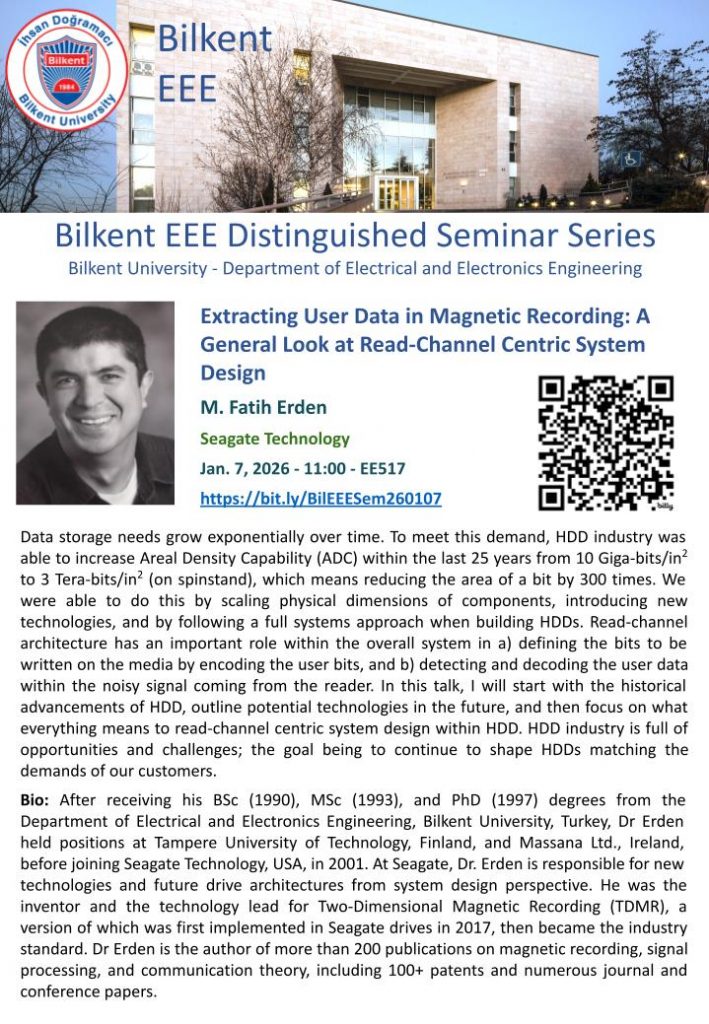
M. Fatih Erden
Seagate Technology
Date/Time: Jan 7, 2026 – 11:00 – EE517
Extracting User Data in Magnetic Recording – A General Look at Read-Channel Centric System Design
Data storage needs grow exponentially over time. To meet this demand, HDD industry was able to increase Areal Density Capability (ADC) within the last 25 years from 10 Giga-bits/in2 to 3 Tera-bits/in2 (on spinstand), which means reducing the area of a bit by 300 times. We were able to do this by scaling physical dimensions of components, introducing new technologies, and by following a full systems approach when building HDDs. Read-channel architecture has an important role within the overall system in a) defining the bits to be written on the media by encoding the user bits, and b) detecting and decoding the user data within the noisy signal coming from the reader. In this talk, I will start with the historical advancements of HDD, outline potential technologies in the future, and then focus on what everything means to read-channel centric system design within HDD. HDD industry is full of opportunities and challenges; the goal being to continue to shape HDDs matching the demands of our customer.
Bio: After receiving his BSc (1990), MSc (1993), and PhD (1997) degrees from the Department of Electrical and Electronics Engineering, Bilkent University, Turkey, Dr Erden held positions at Tampere University of Technology, Finland, and Massana Ltd., Ireland, before joining Seagate Technology, USA, in 2001. At Seagate, Dr. Erden is responsible for new technologies and future drive architectures from system design perspective. He was the inventor and the technology lead for Two-Dimensional Magnetic Recording (TDMR), a version of which was first implemented in Seagate drives in 2017, then became the industry standard. Dr Erden is the author of more than 200 publications on magnetic recording, signal processing, and communication theory, including 100+ patents and numerous journal and conference papers.